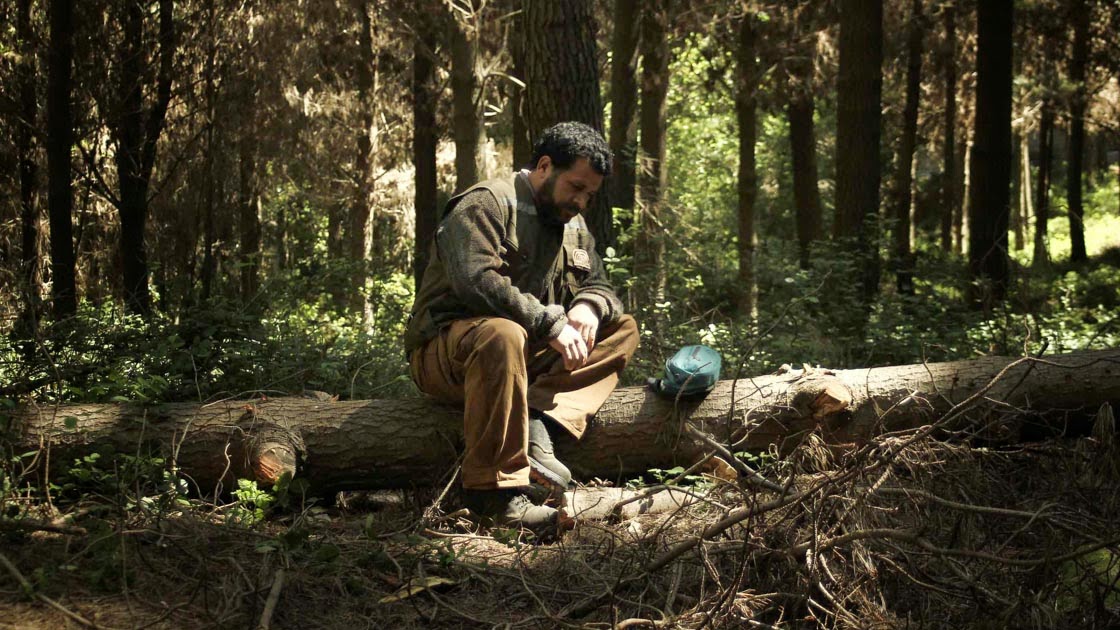To Kill A Man (2014)
dir: Alejandro Fernandez Almendras
SIFF 2014 Film #10
The intersection of masculinity, violence, ego, and protection has been a topic covered for years in cinema. Sam Peckinpah’s 1971 classic Straw Dogs, for example, examines what happens when a wimpy rich guy moves with his wife into his wife’s family's old house in the country, and then is confronted by the countrymen who seek to challenge his masculinity to his breaking point. This was revisited in 2003’s Cold Creek Manor, and again in the remake of Straw Dogs.
Chile finally made its own edition of this formula, adding the Latin culture view of masculinity into the mix. To Kill A Man examines what happens when an educated but effete working man is incessantly harassed by a poor gangster living in the projects. Jorge, the working man, is a researcher in the Santa Julia Research Forest. He takes the bus to work, he is married with 2 teenage kids, a son and daughter, lives in a modest house. He is surviving, but isn't exactly rich. On his way home, after picking up a cake for Jorgeito's 18th birthday, he is harassed by a gang of low-level street hoodlums led by Kalule. When he goes back out to pick up some alcohol for the party, he’s essentially mugged by the group who even stoop to taking his diabetic kit!
This is just another step in an ongoing feud, but one that starts to have serious consequences as Jorgeito mans up and goes to confront Kalule. Kalule shoots Jorgeito. As a result of everything, Jorge’s wife demands a divorce, and when Kalule is released, he’s out for revenge.
To Kill a Man asks a more unique question than the previous films. To Kill A Man asks how far do things have to go before it is OK to take the law into your own hands. Unlike most of the films of this ilk, the police start on the side of Jorge. Jailing and imprisoning Kalule. But, when the feud heats back up, the police start to act more and more impotent, for some reason. Despite the family having a protective order, the police don't arrest Kalule for any of the harassing incidents that he perpetuates. Marta, Jorge’s wife, berates Jorge for not being able to protect his family when their daughter ends up in the hospital. And, so…what does a man do?
Even though this move is full of clichés, it at least runs through them at a very clipping pace, running only a short 82 minutes. There’s little bloat here, instead leaving most of the movie to the main scenes and keeping the scene lengths to be long enough to hold the emotions of the movie. A longer movie would have dragged its ass to a sluggish pace, especially since the way through the movie is fairly well-trodden up until the final 15 minutes.
The final 15 minutes bring up a topic that isn't really addressed in any of the other movies: Responsibility. I’m not going to tell you what happens, but at what point is a person responsible for their actions? What is permissible, and how does conscience figure in? To Kill a Man does manage to ask these questions, even if it doesn't answer them for you personally. The sign of an interesting movie is that it asks you to think what you would do, but doesn't pass any of the moral judgments about your decisions, instead asking you to make them for the movie. It points you to various possibilities but doesn’t say which is right or wrong.
Holding To Kill a Man back from greatness or significance is a pedestrian style it thinks is a conscious choice. It feels like the post-Traffic Mexican films of the 00s, full of browns and greens without a full color palette, and full of seemingly boring cinematography. This is a shame because the movie itself is full of interesting ideas and acting, even if it runs though clichés. It’s a movie that deserves better than the visuals it is given.


No comments:
Post a Comment